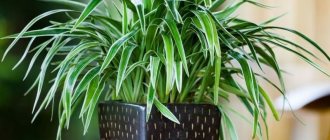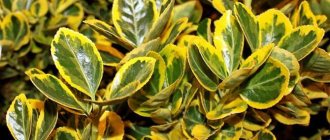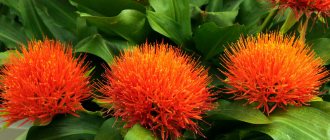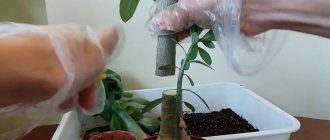Guzmania is a popular indoor flower these days. It belongs to the Bromeliad family. In its natural form, it is distributed in Central America and Brazil. It grows in tropical forests. Depending on the variety, guzmania may have a slightly different appearance. But the plant species do not differ radically from each other. They grow in the form of a rosette, the leaves are oblong, pointed upward.
Depending on the species, the leaves can reach from thirty to sixty centimeters in length. In nature, these plants are epiphytes (that is, they are attached not to the ground, but to other plants), so they have aerial roots, thanks to which they receive from the air most of the moisture necessary for photosynthesis. By the way, epiphytes include everyone’s favorite orchids and many representatives of Bromeliads, which include guzmania. How to care for such crops? This is what we will look at today.
Varieties and their differences
Guzmania can have flowers of different colors and sizes, mostly they are bright and large, with pointed oblong petals. The most common species is Guzmania red. It is distinguished by its bright red leaves. Her flowers are the same color. We will tell you how to care for red guzmania below. Growing this flower does not require too much effort.
The next variety is Guzmania minor Rondo. “How to care for her?” - this question was probably asked by any person who grows indoor flowers. Minor rondo is the most common representative of this genus among indoor plant lovers. These beauties can have white or red flowers. The leaves that surround the flower are also brightly colored - usually orange or red. There are also varieties with striped leaves, but they are not as common.
Another variety is guzmania mix. Many people also wonder how to care for it. Let's look at the basic rules for caring for plants of the Guzmania genus.
Characteristic
Guzmania is an evergreen epiphyte of the Bromeliad family: a true representative of Decorum Plants. The genus contains about one hundred and thirty species of different plants, found mainly in the tropics. It is clear that in our climate we are forced to grow guzmanias only as indoor or greenhouse plants. Note that guzmania received its name in honor of the name of the scientist who discovered it: the Spaniard Anastasio Guzman made the discovery in 1802.
These exotics are thermophilic and can bloom only at temperatures around +25. All types of guzmania are leaves sticking out in different directions, forming rounded rosettes from which the inflorescence grows. It blooms at the age of two to three years, and after this decorative period it dies off.
Kinds
Blood red
Broad-leaved plant: the upper part of the flower faces down, the rosette is goblet-shaped. The foliage grows 30 cm in length and becomes bright red when flowering (see photo).
Tongue
An extremely spectacular representative of guzmanias, forming decorative inflorescences. In nature, it is an epiphyte that grows on trees in the Bolivian jungle. The foliage is pointed, rather wide, forming dense fleshy rosettes. The peduncle is straight and short, the inflorescence is located in its center, consists of many small yellow buds.
Mosaic
It has a spreading rosette, the leaves are rounded at the end, whole. Like true decorum plants, mosaic guzmania has decorative foliage: stripes of a darker shade are noticeable on the main light surface. The leaves are long - they can reach 70 cm. Their width is from 5 to 7 cm.
The peduncle is straight, its length is much shorter than the leaves. The inflorescence is spike-shaped, includes from 10 to 20 white-yellow flowers. The bright pink bracts located at its base give the plant a special originality. In nature, the plant is found in Panama and Colombia.
Single-haired
This species is naturally distributed in India, Peru, Nicaragua, and Northern Brazil. Also found in South Florida. Guzmania unispica has a well-developed rosette: it is wide, thick and dense. The leaves are multiple, narrow, with a pointed end. One yellowish-green leaf grows up to 40 cm long and up to 2 cm wide.
The peduncle is straight, the inflorescence is multi-row, spike-shaped. This inflorescence grows up to 15 cm in length and reaches 3 cm in diameter. The flowers themselves are white in color and reach 3 cm in diameter.
Often you can also find Guzmania mix on sale: when different types of plants of different colors are collected in one container: such a group looks very impressive. Guzmania Tempo amazes with its amazing colors: yellow-golden with a light green transition, and the Hilda variety boasts amazing bright yellow bracts.
Transfer
What to do if guzmania has grown, how to care for a plant that is cramped in its pot? The plant requires very careful replanting, taking into account some nuances. And we’ll start talking about its cultivation with a description of this procedure, since you will need to perform it every year or every two years, depending on the type.
It is undesirable and makes no sense to replant an adult guzmania itself, but with young shoots that remain after the mother plant has dried out, this procedure must be carried out. You can also separate the root shoots during the life of the old plant. Then you need to do this before it blooms. In this way, you can not only propagate the plant, but also extend the life of the mother bush. So, let's start transplanting the young guzmania. To do this, you need to immediately prepare the pot.
Drainage and soil
A drainage layer should be placed at the bottom. The lower the pot, the thinner this layer should be. But it should take up quite a lot of space - one third of the height of the vessel. It would be best to use expanded clay or polystyrene as drainage. You also need to make a layer of coal. It prevents the occurrence of putrefactive processes in wet soil. This will only make your Guzmania healthier. How to care for a plant that came to us from the hot tropics? The crop loves abundant watering, so the use of coal as drainage is necessary for its full growth. This plant also requires special soil.
This can be either soil intended for bromeliads or one made for orchids, since they have identical soil requirements. You can also prepare soil suitable for guzmania yourself, but this is quite difficult. As additives, this kind of soil includes components that are difficult to find separately, for example, sphagnum. If you add it to the soil, as well as peat, pieces of bark and loose leaf soil, you will get land in which Guzmania will feel comfortable.
Transplantation process
Having prepared suitable soil, pour it into the pot a few centimeters, making a slight elevation in the middle. Carefully place the guzmania on it, straighten the roots, being careful not to damage them in any way. This is quite difficult, because the root system of this plant is quite weak and fragile, so you need to try to do everything as carefully as possible. After adding soil to the level of the plant’s neck, tap the pot on the windowsill (or other surface on which it is located) a couple of times. This will allow the soil to compact slightly so you can add more. But under no circumstances trample down the soil in the pot with your hands, as guzmania loves loose soil that contains air. In order for the flower to take root well in a new place, place it in a warm place with good (but not too strong) lighting and without drafts.
Reproduction
Guzmania can be propagated at home in two ways:
- children;
- seeds
Let's look at both options and find out which one is better.
Children
This method involves propagating the plant by lateral shoots grown next to the main trunk. The peculiarity of this plant is that after flowering it dies, but leaves behind young shoots - children suitable for further reproduction. The optimal time for separation and transplantation of children is considered to be spring. After separation, the mother guzmania is destroyed.
The formation of children occurs during the flowering of the mother plant. They can be separated when they reach a length of 15 cm. The shoots should be cut off along with part of the roots and planted in separate containers. Children should be handled with care, as their root system is very fragile. Don’t forget to treat the cut areas in the lower part with crushed charcoal: both activated and charcoal will do.
Drainage is poured into the pot, then standard soil, the composition of which we gave above. The shoot is placed in the center of the pot, its roots need to be straightened, then covered with earth. Compact the soil by tapping the sides of the pot with your fingers, rather than pressing down as usual.
After the children are safely transplanted into separate pots, they should be covered with polyethylene on top. Rooting should take place at a temperature not lower than +28 degrees and high humidity: a mini-greenhouse will help create such conditions.
Children are placed in a bright and warm place, protected from drafts. It is necessary to maintain air humidity for the first time, preventing it from drying out. Watering is carried out exclusively into the outlet and only with warm water, without bleach and hard impurities.
After rooting, the children begin to grow very quickly, and caring for them can already be the same as for fully grown plants. Flowering will begin in 2-3 years. Interestingly, if you leave the baby in an old pot, carefully separating the mother guzmania, the young plant will begin to bloom within a year.
Seeds
A much less popular breeding option, used only if it is not possible to purchase a baby. Before planting, seeds are disinfected using potassium permanganate (light pink solution).
Sowing is done in a substrate consisting of equal parts of sand and peat. The seeds are not sprinkled with soil on top. It is recommended to cover the container with film on top so that the seeds germinate faster.
After three weeks, shoots usually appear. And when they grow up within a month, they are picked into separate small pots (7 cm in diameter). Standard care follows. Flowering will not come soon: propagation by seeds is always the longest option.
Watering rules
The guzmania flower, which we continue to tell you how to care for, loves regular and good watering. You can even say that it prefers high humidity of both soil and air. This is especially true for a species such as guzmania minor, you will know how to care for it after reading this article. You need to water it with warm water, but, naturally, not hot, its temperature should be slightly above room temperature. In addition, it should not be too hard. In order to get rid of excessive hardness, you need to boil the water and leave it to brew. In addition, it is necessary to regularly spray the leaves of the plant and the air around it in general to increase humidity. This is necessary because guzmania has an essentially underdeveloped root system, and it absorbs half of the moisture necessary for photosynthesis from the air with the help of leaves or aerial roots. In addition, when watering, you need to take into account the fact that water is not poured into the ground around the flower, but into the outer layer of the rosette (not into the inner layer, as this can lead to rotting of the root system).
Possible problems
Problems that arise at home with growing this delicate plant can be solved in special forums. Here are some popular tips:
- If, during transplantation, a lack of viable roots is detected, then the plant requires resuscitation. The flower must be transferred to a pot with a prepared substrate, and a little moss should be placed on the top layer for easy development of the root system. Install supports to make it easier for the plant to grow. Moss must be periodically sprayed to keep it moist - this is important for resuscitation. Monitor the quality and quantity of sunlight.
- Many people are concerned about why cambria does not bloom and what needs to be done. The reasons may be insufficient lighting, lack or excess of watering, pests - everything needs to be considered individually.
- Fungal infections often occur on domestic cambria plants. Although they do not interfere with admiring the flowering, they still cause trouble. To avoid their development, the flower is treated with fungicides, although they usually give only a short-term effect. Additionally, after treatment with the drug, it is worth trying to transplant the plant into new soil and treat it with charcoal.
- Many pests can spoil the plant, depriving you of the opportunity to admire its flowering. Cumbria is often attacked by scale insects and false scale insects, and mites - spider or red mealybugs. You can get rid of them using safe bioacaricides; preventive treatment must be carried out several times in spring and autumn.
Diseases and pests
In general, it is believed that guzmania is a very resistant plant to various diseases.
However, it can also be affected by parasites of various natures (be it insects or some kind of fungus). This happens mainly due to improper care. So, what pests can this beautiful plant fall victim to? First of all, we can say about scale insects, spider mites and root scale insects. It is these parasites that most often attack guzmania. The fact that the plant is infested with pests is indicated by spots on the leaves and stem, mostly brown or black (it all depends on the specific type of parasite). They can only be controlled with the help of chemicals - insecticides. But diseases not associated with parasites are most often caused by an imbalance of moisture in the room where the flower is located. As already mentioned, he loves an increased level of moisture around him. And so, if the air or soil is dry, the leaves of the guzmania may begin to turn brown and gradually fall off. There is only one way to combat this - regularly spray the plant and water more frequently.
Home care
Although Cambria is the most unpretentious type of orchid , you need to know the rules for caring for this hybrid beauty.
An orchid develops cyclically, according to certain periods:
- Growth phase , which begins with the appearance of the baby - a shoot at the base of the main plant. Not only the growth of leaves is activated, but also the roots, which become greener at the ends.
- The formation of peduncles and flowering occur simultaneously with the enlargement of the bulb. How quickly the plant will bloom and the bulb will grow depends on the conditions of its maintenance.
- A bush with light green narrow leaves is formed from a young sprout.
- The rest period , which in Cambria depends on care. In winter, dormancy is associated with insufficient lighting.
Lighting and location
This type of orchid is light-loving, but its thin leaves can simply burn in direct sunlight. Therefore, pots with flowering plants are placed on windows facing west, northeast, southeast or east. With the onset of hot summer, it is worth carefully monitoring the condition of the leaves.
If they turn yellow, then the orchid must be moved to a more shaded place. You should not lose attention to the winter period - in the cold months, due to lack of light, the branches may begin to lose leaves . To prevent this from happening, it is worth organizing additional lighting with fluorescent lamps near the hill with the plant.
The issue of lighting is also important because the flowering of Cambria depends on a sufficient amount of light. You can see beautiful large flowers of bright colors only if you create the right environment.
Temperature and humidity
A comfortable room temperature for an orchid is no higher than 28 and no lower than 16 degrees. The temperature fluctuation between day and night should not be more than 5 degrees. You should not allow it to get cold indoors; temperatures below 14 degrees are dangerous for the plant .
If other types of orchids need to organize differences in night and day temperatures, then Cambria is less demanding in this regard. If possible, keep the plant in a cool, draft-free place.
At low temperatures (no more than 18°), you should not look for ways to additionally moisturize. With the onset of heat or the heating season, when it seems that the cambria is not feeling well, it is worth organizing regular spraying - about a couple of times a day. Humidity in this case should be kept at 40-50%.
Watering
The biggest problem in home care is proper watering . Sometimes it is due to excess moisture or improper water supply that the plant quickly dies. This is due to the fragile root system - the roots of the plant are too thin and weak and cannot survive rotting. How to prevent this?
Water for irrigation must be prepared in advance. It must be soft, without unnecessary impurities and sediment. You can use filtered water, previously settled or boiled.
The plant requires abundant watering during the period when pseudobulbs appear. When they are fully formed, watering is reduced, and watering is resumed when a peduncle appears. Watering is again reduced and stopped completely during dormancy. The substrate is moistened by immersing the pot completely in a container of water (the main thing is that the liquid does not get on the pseudobulbs!), and then allow the excess liquid to drain. The duration of the procedure is half an hour in summer and no more than 7 minutes in winter.
The composition of the substrate consists of fragments of bark; they can float to the surface of the water. To prevent this from happening, they are pressed from above.
Note! It is necessary to allow the substrate to dry between waterings until the soil is visible at the bottom of the pot.
Fertilizers
The weakness of the root system also affects the regularity and quality of fertilizing. It is necessary to introduce a specialized flower feed carefully so that the plant gradually gets used to its chemical component. The same should be done when finishing feeding after flowering.
It is not recommended to use root feeding for young plants; young weak roots can be burned.
For Cambria, a specialized organic or complex fertilizer for orchids is suitable. It is worth remembering that the soil for Cambria should not be over-salted, so the issue of the amount of feeding must be approached with caution - it is better to undersupply nutrients than to overfeed the flower. Fertilizers must be applied with the onset of calendar spring until the end of summer - from March to September. In February, the roots of the plant are prepared for feeding; in September, the feeding period is completed.
Fertilizer
You can also feed this indoor flower if you want to speed up its growth or speed up flowering. In principle, this is not necessary. But if you see that the plant is not blooming (flowers usually appear in November), then know that it is lacking minerals. To correct this kind of situation, you can use complex fertilizers that are intended for bromeliads or orchids. They need to be diluted with warm, soft water and watered with it as usual. This can be done no more often than once every two to three weeks.











